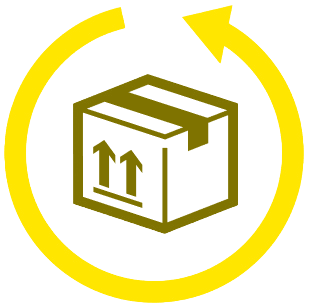
Much Needed Tummy Time!!
Does your baby dislike tummy time? You’re not alone! It's quite common for babies to cry or get frustrated as soon as they’re placed on their tummy, or to lose interest quickly. Let’s dive into some of the most common tummy time questions: what it is, why it’s important, how to make it enjoyable, and more.
What is tummy time?
Tummy time refers to the time your baby spends on their stomach (also called the prone position) while awake. It can take place on the floor, a playmat, or even while your baby is lying on your chest (yes, tummy time can double as cuddle time!). It’s not just for newborns—tummy time continues to be important as your baby grows, helping support their ongoing development.
Safety Tip: It’s important to know that tummy time and tummy sleep are not the same. While tummy time is essential for your baby’s physical development, tummy sleep isn’t safe until your baby can roll over on their own.
Why do babies need tummy time?
As a parent, you’ve probably heard that tummy time is important, but why is it so essential? Research shows there are numerous benefits to tummy time:
- It helps strengthen your baby’s neck, upper body, and core muscles.
- Time spent on the stomach improves motor skills, eventually leading to rolling over, sitting independently, and even crawling.
- Being in the prone position supports the development of hand-eye coordination and body awareness.
- Limiting time spent on their back also helps prevent the formation of flat spots on your baby’s head.“
When should I start tummy time?
Try starting tummy time with your newborn as soon as you get home from the hospital! If you haven’t begun yet, no worries—you can start today. Take it slow. In the beginning, even 20-60 seconds is beneficial. Gradually increase the length of tummy time sessions as your baby becomes more comfortable.
How much tummy time should my baby do each day?
The American Academy of Pediatrics recommends at least 15-30 minutes of tummy time per day by the time your baby is 7 weeks old. If this sounds overwhelming, don't worry—you can break it into shorter sessions throughout the day. It’s perfectly fine if your baby is still building up to longer tummy time periods.
Think of it this way: Newborns typically have at least 5 wake windows, each lasting 45-90 minutes. If you manage just 3 minutes of tummy time during each wake window, that adds up to 15 minutes a day.
By 5 months old, babies usually have 4 wake windows. If you incorporate 8 minutes of tummy time during each 2-3 hour wake window, your baby will get 32 minutes of tummy time throughout the day.
Is it ok to let my baby cry during tummy time?
We want tummy time to be a positive experience. If your baby starts crying, try switching up their position or activity. Still not working? It’s okay to take a break. Remember, it's perfectly fine to pause and try again later.
How long should I wait for tummy time after feeding?
Waiting 15-20 minutes after feeding can help prevent discomfort or spit-up during tummy time. However, if your baby struggles with reflux or frequent spit-up, you might need to wait a bit longer, or try tummy time before feeding.
Expert Tip: If your baby needs to stay upright after feeding, try reclining in a chair and placing them on your chest. This keeps them upright while still providing a great position for babies with reflux or who are prone to spitting up.
What are some tummy time activities?
- Lay your baby down on a firm, flat surface, like a play mat or a blanket on the floor, and get down next to them. Sing songs, shake a rattle, or talk to them to encourage head lifting and turning.
- Place toys, such as high-contrast cards or a mirror, nearby for your baby to gaze at during tummy time. As they grow older, introduce more toys around them to promote movement.
- You can also place your baby on your chest. This chest-to-chest position is a great way to bond while engaging in tummy time. Encourage them to look at you by talking and interacting.
- Try placing your baby on the couch or atop an exercise ball, holding them securely as you sit in front of them. This allows for eye contact and adds a fun twist to tummy time!
- While on the floor, consider using a tummy time pillow under their chest to make it easier for your baby to lift their head and push up. This helps them look around and engage more freely.
- You can also lie on your back with your knees in a tabletop position, placing your baby on your legs. You can gently move them up and down, turning it into a fun game!
- Another option is to place your baby on your thighs, facing outward, allowing them to explore their surroundings.
What are the best tummy time tips?
Go Slowly
Start with 20-60 seconds of tummy time in the beginning. Gradually increase the duration by adding 1-2 minutes as your baby becomes more accustomed to it. If your baby becomes upset or frustrated, try a different position or activity, and if that doesn’t work, simply try again later. Adding just a little time each day can help your baby feel more comfortable and allow you to discover the tummy time activities they enjoy most.
Practice a Few Times Each Day
You don’t need to fit all of your baby’s tummy time into one session or even within a single wake window. It's beneficial to practice tummy time multiple times throughout the day.
Focus on Tucking in Their Little Arms
Keep those elbows directly beneath the shoulders. Why? Babies’ heads are heavy, and when their arms are sprawled out, it puts a lot of strain on their tiny neck muscles. Tucking in the elbows allows the shoulder muscles to assist, making it easier for them to lift their heads.
Try Tummy Time When Your Baby Is Content
A happy baby is much more likely to tolerate or even enjoy tummy time. For many babies, this means tummy time is best done early in the wake window when they’re well-rested. Understanding your baby's routine is crucial; for instance, if evenings tend to be hectic or fussy, aim for tummy time earlier in the day. Additionally, waiting about 15-20 minutes after a feeding can significantly improve tummy time, especially for those with reflux or spitting up issues.
Keep Things Interesting
As your baby grows, introduce toys around them to keep them engaged and stimulated. Encourage older siblings to join in by lying on the floor next to the baby (or you can join in too!). Consider doing tummy time on a blanket outside on a nice day. Making tummy time enjoyable helps create a positive experience.
Reserve Tummy Time for When Baby Is Awake
Remember that tummy time and tummy sleep are not the same. Tummy time during awake periods is vital for your baby's physical development, while tummy sleep isn’t safe until babies can roll over independently.
As with everything in these early months, be sure to extend grace and patience to both yourself and your baby during this time.






